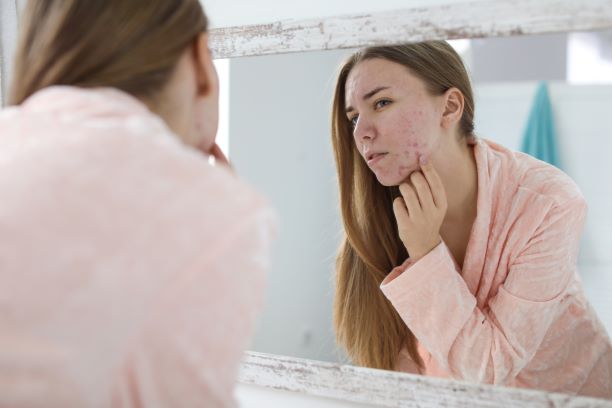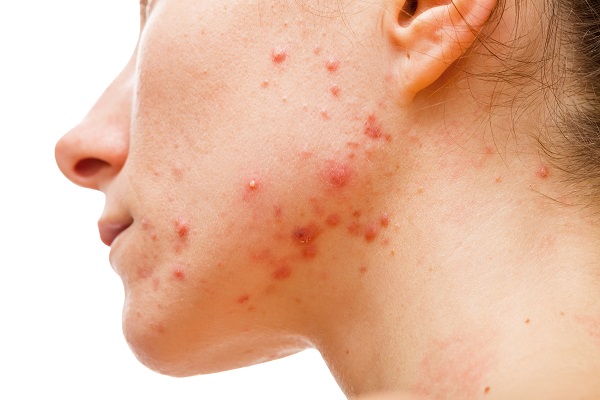While research indicates that nearly 80% of people will experience some form of acne between the ages of 11 and 30, cystic acne is actually very uncommon. For this reason, people with cystic acne are often unaware that their unique skin condition requires a different treatment plan when compared to caring for the skin of those with other forms of acne. According to Dr. Arathi Rana of U.S. Dermatology Partners in Sherman and Paris, Texas, “Recently, cystic acne has gotten some attention thanks to a handful of celebrities speaking up about their struggles with this difficult to manage skin condition, but it’s still unknown to most people. The increased awareness is a great start, and it’s always better for a greater number of people to understand what this condition is and that there are good options for managing it.” In this blog, Dr. Rana will walk through all the basics about caring for skin with cystic acne and how your dermatologist can help you manage this painful condition.
What is Cystic Acne?
Cystic acne is a rare and serious form of acne vulgaris, a skin condition that occurs when the skin’s pores or hair follicles become clogged with skin cells, oils, and other foreign materials. Clogged pores can trap bacteria, specifically Propionibacterium acnes (P. acnes) beneath the skin, leading to inflammation and infection that forms pimples (open and closed comedones often called blackheads and whiteheads). In very severe forms of acne, the patient may experience larger, deeper, or more painful pimple formations like papules, pustules, nodules, and cysts.
As the name would suggest, those who are diagnosed with cystic acne often develop cysts, fluid and foreign matter-filled sacs that form below the skin. These cysts grow very deep into the skin’s interior dermis layers, and they may be very painful to the touch. Cystic acne can also become infected. The cysts of cystic acne most frequently form on the face, but they also frequently develop on the shoulders, back, chest, and sides as well as the arms. Like other forms of acne, most people will develop cystic acne in their teens when there are dramatic hormonal fluctuations due to puberty. However, cystic acne does not always clear up when teens reach maturity, and there are cases of adults or younger children developing this condition.
What Causes Cystic Acne?
According to Dr. Rana, “Almost all types of acne form during the teen years when changes in hormone levels lead to increased sebum (oil) production. This sebum oil is naturally produced by the body to keep skin moisturized, but too much sebum oil can clog pores and trap the P. acnes bacteria, leading to pimples. For those with cystic acne, these clogged pores form infection and inflammation deep within the skin’s layers. Cystic acne is almost always caused by the influx of androgen hormones paired with rapid cellular growth that occurs during the adolescent and teen years, but there are other potential causes of cystic acne that will influence the dermatologist’s recommendations for treatment and daily care.”
In addition to adolescent hormone changes, some of the common causes of cystic acne include:
- Pregnancy-related hormonal shifts
- Adverse reactions to skincare or cosmetics
- Exercising while wearing tight materials that don’t allow airflow often leads to or exacerbates cystic acne on the body
- Humidity and sweating can increase the risk for cystic acne
- Genetic predisposition (having one or more family members with acne)
- Chemical or toxin exposure
- Lithium and corticosteroid medication use
How Does Caring for Cystic Acne At-Home Differ from Caring for Other Forms of Acne?
On the difference between caring for cystic acne and other forms of acne, Dr. Rana says, “Because cystic acne forms so deep into the layers of skin, it is much more likely to cause scarring, so it’s important to care for new blemishes as they arise to avoid these long term concerns. Partnering with a dermatologist should be an important part of your cystic acne treatment plan.” Below, Dr. Rana has provided some cystic acne do’s and don’ts.
Cystic Acne Care Do’s
When it comes to caring for skin with cystic acne, the following steps will help to keep your skin looking and feeling its best:
- Wash your face in the morning, evening, and after sweating using a gentle cleanser.
- Apply moisturizer to mitigate the overproduction of skin oil
- Choose your makeup, skincare, and other products carefully – look for labels that say non-comedogenic and/or oil-free
- Plucking, waxing, and shaving can all adversely impact the hair follicles, leading to inflammation and breakouts, so choose gentle products and be very careful
- Seek professional dermatologic interventions, especially when you’re experiencing a severe breakout
- Take steps to minimize stress, which can increase cortisol levels, leading to breakouts
- Exfoliate skin regularly to avoid clogging pores with dead skin cells
Cystic Acne Care Don’ts
In addition to the best steps to keep skin healthy, keep the following don’ts in mind:
- Don’t over wash, which can dry out your skin leading to more sebum oil production
- Don’t use harsh exfoliants that can damage the skin or increase inflammation – instead, look for gentle exfoliant products and follow your dermatologist’s recommendations for skin exfoliation
- Don’t pop cysts as this can cause a breakout to spread and it increases the risk for infection and scarring
Can My Dermatologist Provide Treatments for Cystic Acne?
According to Dr. Rana, “Anyone who struggles with cystic acne should be working with a dermatologist to manage their symptoms and maintain skin health.”
Dermatologists can provide a range of cystic acne treatments, including:
- Cyst removal – we can safely and effectively remove large, painful cysts while minimizing risk for scarring and infection
- Topical treatments – dermatologists can recommend prescription and over the counter cleansers and skincare treatments to help minimize risk for breakouts
- Isotretinoin – often referred to by its original brand name, Accutane, this is a short term treatment that can significantly improve skin health for those suffering from cystic acne that doesn’t respond to other treatment options
- Steroids – injected steroid treatments can be effective in minimizing the side effects of cystic acne like swelling and inflammation
- Contraceptive pills – oral birth control reduces sebum oil production and controls hormonal fluctuations, which decreases breakouts
How do I Get Started Working with U.S. Dermatology Partners?
If you’re interested in scheduling a visit with a skilled U.S. Dermatology Partners dermatologist for help with managing your acne, you can start the scheduling process by completing our simple online form.
In addition to in-office appointments, we’re happy to offer virtual teledermatology visits. You can schedule these visits using our simple online virtual visit request form. One of our team members will be back in touch to discuss your appointment details.
Find a location near me
or



